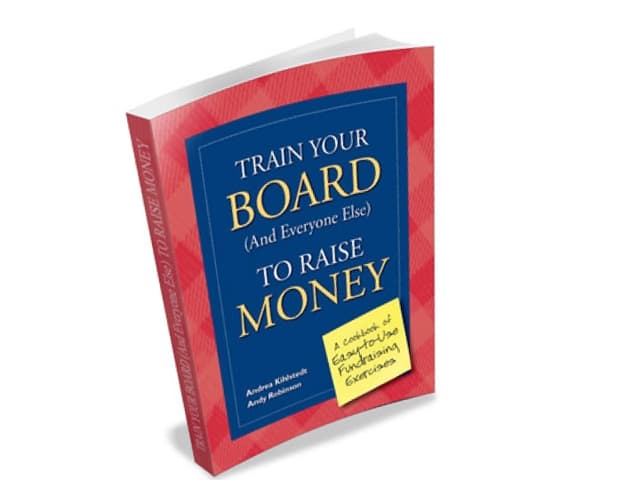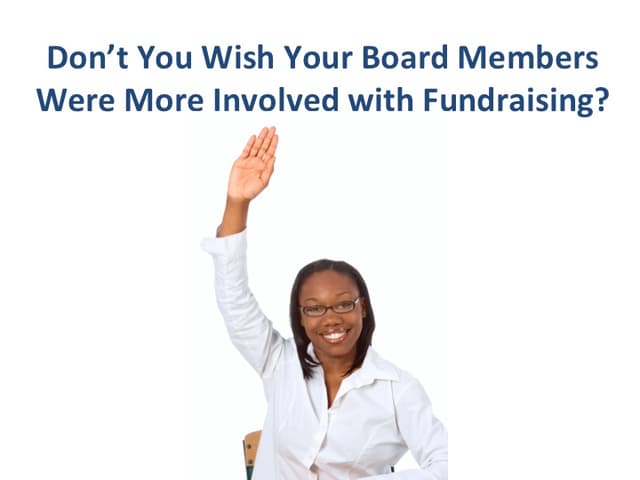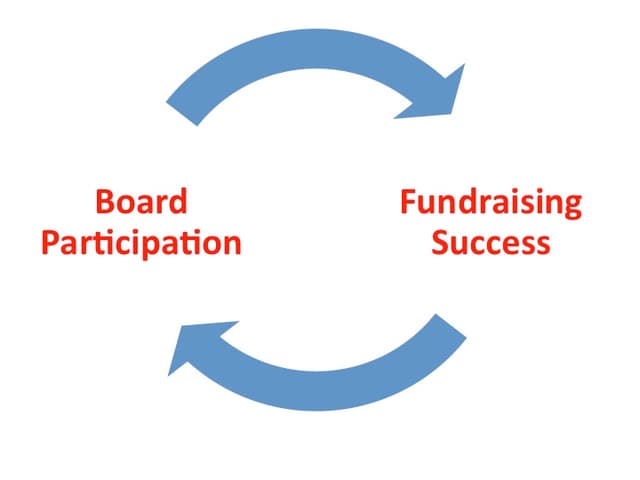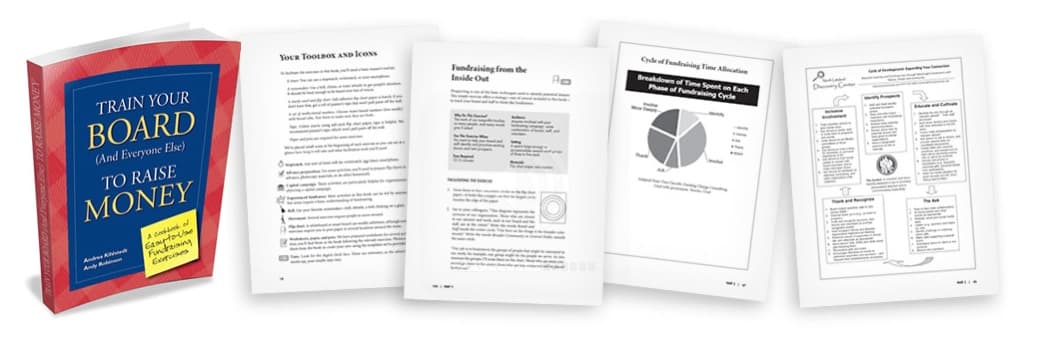Train Your Board (and Everyone Else) to Raise Money
- Written by
- Amy Eisenstein
- Added
- October 29, 2015
Book review
Train Your Board (and Everyone Else) to Raise Money
By Andrea Kihlstedt and Andy Robinson
Presented at IWITOT, Baltimore and reviewed for SOFII by Amy Eisenstein ACFRE

I buy fundraising books. I’m always eager to learn more. I read most of them and keep them on the shelf as references.
I bought this book last year and it isn’t on the shelf. It lives on my desk and it’s dog-eared, highlighted and underlined.
Why do I refer to it so much? Because every time I get ready to facilitate a board retreat or lead a workshop, I thumb through it looking for just the right set of exercises.
Don’t get me wrong, I’ve trained board members for years and I have a pretty good set of my own tried and true exercises, but this book is a treasure trove.

Yes, this is a book of fundraising exercises – 51 of them to be precise. Each is laid out like a recipe, telling you what it will accomplish, how to do it, what supplies (if any) you’ll need and how long it’ll take. It even includes wording for debrief questions in case you’re not an experienced facilitator.
Some exercises require worksheets and, of course, they’re in the book, just waiting for you to copy them.

The exercises are organised into eight sections:
- Reducing barriers to fundraising
- Debunking fundraising myths
- Making the case
- Building blocks for fundraising success
- Finding people to ask
- Asking for the gift
- After the ask
Some of the exercises are short 15-minute ice-breakers. Others are longer and more substantial.
They’ve all been tested and, if my experience with many of the exercises is an indication, they all work.

When SOFII asked me to participate in I Wish I’d Thought Of That at the AFP convention in Baltimore I immediately thought of this book. I could have picked any number of exercises, but I picked on ‘How High Will You Go’, which gets board members thinking about their giving in new and bigger ways.
Whether you’re a master trainer or a development director who wants to do a little training with your staff and board, this book is perfect for you.

















